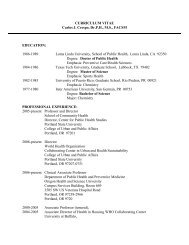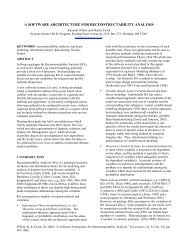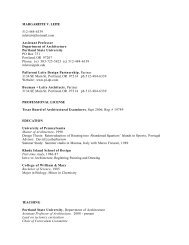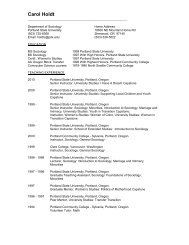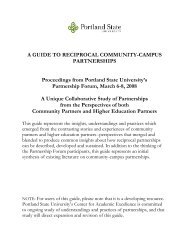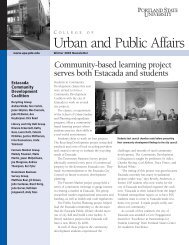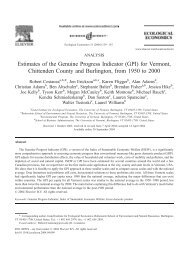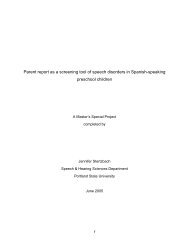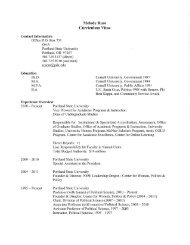Effects of integral stimulation therapy on speech - Portland State ...
Effects of integral stimulation therapy on speech - Portland State ...
Effects of integral stimulation therapy on speech - Portland State ...
You also want an ePaper? Increase the reach of your titles
YUMPU automatically turns print PDFs into web optimized ePapers that Google loves.
At age 3 1/2, CP’s pediatrician referred him to the Oreg<strong>on</strong> Health Sciences<br />
University for a <strong>speech</strong>-language evaluati<strong>on</strong> where he received a diagnosis <str<strong>on</strong>g>of</str<strong>on</strong>g> childhood<br />
apraxia <str<strong>on</strong>g>of</str<strong>on</strong>g> <strong>speech</strong>. At the age <str<strong>on</strong>g>of</str<strong>on</strong>g> 4, CP began receiving <strong>speech</strong> and language services from<br />
a private <strong>speech</strong> language pathologist and briefly through a pre-school early interventi<strong>on</strong><br />
program. Early interventi<strong>on</strong> services included a 90 minute language group <strong>on</strong>ce a week.<br />
CP’s private individual <strong>speech</strong>-language services twice per week for 45 minutes were<br />
<strong>on</strong>going. CP’s parents disc<strong>on</strong>tinued interventi<strong>on</strong> from early interventi<strong>on</strong> services when<br />
they decided his <strong>speech</strong> needs would be better served by increased individual <strong>speech</strong>language<br />
services. During this period CP was enrolled in a child-parent sign language<br />
class to increase his natural use <str<strong>on</strong>g>of</str<strong>on</strong>g> gestures to facilitate communicati<strong>on</strong> at home. CP’s<br />
parents and <strong>speech</strong> services provider found that his use <str<strong>on</strong>g>of</str<strong>on</strong>g> signed words alleviated<br />
frustrati<strong>on</strong> during CP’s miscommunicati<strong>on</strong>s and increased his verbal attempts for words<br />
when paired with gestures. Speech <str<strong>on</strong>g>therapy</str<strong>on</strong>g> c<strong>on</strong>sisted primarily <str<strong>on</strong>g>of</str<strong>on</strong>g> establishing simple<br />
syllable shapes using early developing <strong>speech</strong> sounds. As CP’s ph<strong>on</strong>etic inventory<br />
increased, new developmentally appropriate sounds were added to treatment goals, and<br />
syllable shapes moved from open to closed and reduplicated syllable shapes. Therapy<br />
techniques utilized multimodal means <str<strong>on</strong>g>of</str<strong>on</strong>g> support including gestural, tactile, kinesthetic,<br />
auditory, visual, oral motor exercises, and bite block treatment strategies. Drilled practice<br />
activities were numerous yet brief to discourage fatigue. Further, objectives were<br />
changed <strong>on</strong> an <strong>on</strong>going basis to provide the support and flexibility needed to adapt to his<br />
communicative progress.<br />
CP was referred to the <strong>Portland</strong> <strong>State</strong> University Speech-Language and Hearing<br />
Clinic for a sec<strong>on</strong>d diagnostic evaluati<strong>on</strong>. Findings <str<strong>on</strong>g>of</str<strong>on</strong>g> the assessment supported the<br />
29



